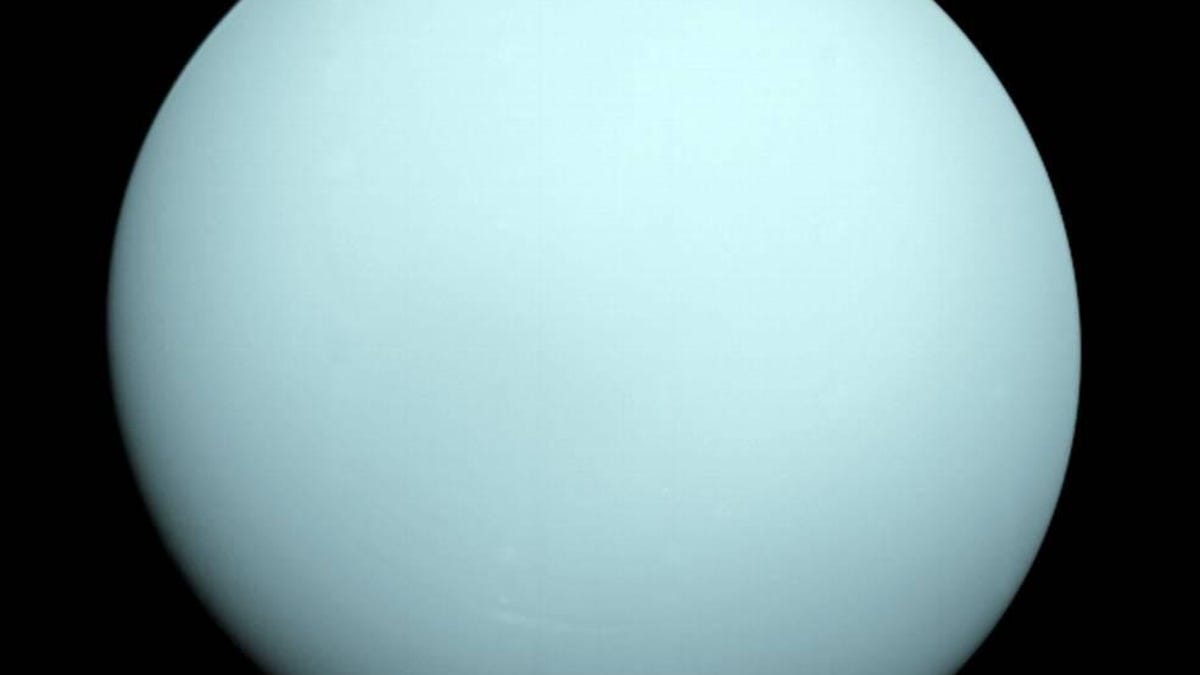Uranus is going to look really, really cool Thursday night
Make all the cheeky remarks you want, but the blue ice giant is getting ready for its closeup.

Uranus, shown here in an image taken by Voyager 2 in 1986, will be visible this week.
Uranus has heard all your cheeky comments. But if you want to get a good look at the icy blue seventh planet from the sun that's the butt of so many jokes, Thursday night is your chance. Bring your own bad puns.
The planet (named for Ouranos, the Greek god of the sky) will reach opposition on Oct. 19, meaning it's directly opposite the sun, bringing it closer to Earth (and brighter) than at any other time of the year
"It's visible all night long and its blue-green color is unmistakable," says Jane Houston Jones of NASA's Jet Propulsion Laboratory. "It may be bright enough to see with your naked eye -- and for sure in binoculars."
Not sure how to find it? "Start looking in the southeast sky within the constellation Pisces, the fish," National Geographic magazine advises. "Scan the constellation carefully, and look for a tiny blue-green disk to pop out against the background of fainter stars." (SkyView is a good app to help you out if you don't know where to get started finding Pisces.)
"The telescopic view should be especially good this month because Uranus appears so high," Astronomy magazine reports. "From mid-northern latitudes on the night of opposition, the planet lies 60° above the southern horizon at its peak around 1 a.m. local daylight time. This is the highest it has appeared at opposition since February 1963."

